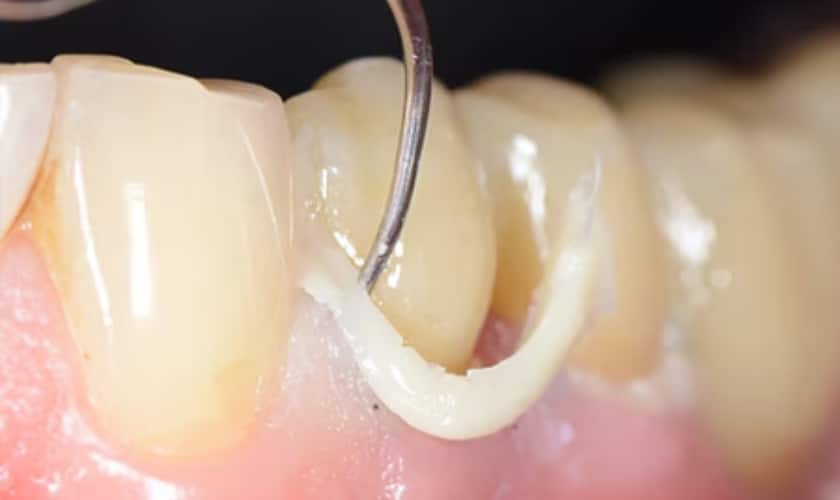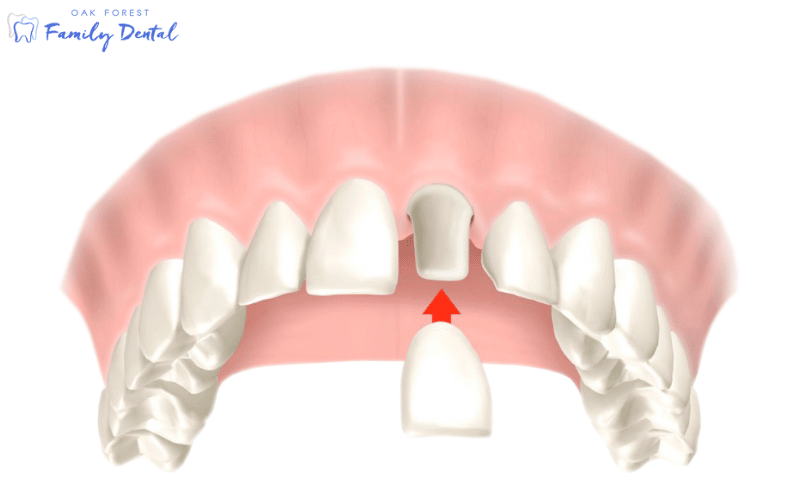Dental cement can be a tough adversary, stubbornly clinging to your teeth long after its intended purpose has passed. But fear not, for there is a way to vanquish this hurdle from the comfort of your own home. With just a few simple steps and some readily available supplies, you can dissolve dental cement and reclaim your pearly whites. Today’s blog will let you know about them so that you can end the hassle of dental cement and restore your smile back to its former glory.
Steps to Dissolve Dental Cement at Home
- Identify the Issue: Before attempting to dissolve dental cement at home, assess the situation carefully. Determine if the restoration is loose, causing discomfort, or if there are any visible signs of damage.
- Gather Supplies: You will need a few basic supplies:
- Dental floss or dental tape
- Dental scaler or explorer (if available)
- Cotton swabs or gauze
- Dental adhesive remover (available over-the-counter)
- Softening the Cement: If the cement needs to be softened for easier removal, use an over-the-counter dental adhesive remover. Follow the product’s instructions carefully, as they may vary. Typically, you apply the remover around the edges of the restoration and allow it to soften the cement.
- Use Dental Floss: Dental floss or tape can be gently inserted between the restoration and your natural tooth to break the seal of the cement. Be cautious not to force it or use excessive pressure, as this can damage your gums or the restoration itself.
- Gentle Manipulation: Use a dental scaler or explorer, if available, to carefully work around the edges of the restoration. Again, gentle manipulation is key to avoid causing damage.
- Rinse and Clean: After successfully removing the restoration, wash your mouth with water to remove any remaining cement particles. Use a cotton swab or gauze to clean the area gently.
- Seek Professional Help if Necessary: If you encounter difficulty or discomfort during the process, stop immediately and immediately book a consultation for dental cement treatment in Oak Forest. Attempting to remove dental cement at home carries risks and may not always be successful.
Precautions & Considerations
- Avoid Force: Never force a restoration to come loose. This may cause harm to your natural tooth structure or the restoration itself.
- Patient Education: Understand the risks and limitations of attempting dental procedures at home. Professional dental care is essential for optimal oral health.
- Consultation: If unsure or encountering complications, seek advice from your dentist to dissolve the concern of dental cement treatment in Oak Forest.
Why Not DIY Dental Cement Removal?
Dental cement is a powerful adhesive designed to hold crowns, bridges, and fillings securely in place. Tampering with it can lead to a cascade of problems:
- Further Damage to the Restoration: Improper attempts at removal can damage the crown, bridge, or filling itself, requiring a more extensive (and expensive) repair by your dentist, potentially involving replacement or additional procedures to restore functionality and appearance.
- Gum Irritation: Mismanagement of dental adhesives can result in gum irritation and inflammation. This discomfort may arise from adhesive residue not being adequately cleaned, leading to gum sensitivity and potential swelling.
- Increased Risk of Infection: Prying or forcing a crown or filling loose can create openings for bacteria to enter the tooth, potentially leading to infection.
- Swallowing Dental Material: There’s a risk of accidentally swallowing small fragments of cement or the restoration itself.
Safe (and Dentist-Approved) Options for Loose Crowns or Fillings
While complete removal isn’t advisable at home, here are some steps you can take to manage a loose crown or filling until you see your dentist:
- Try a Gentle Re-seating: If the crown or filling feels slightly loose but isn’t completely dislodged, you can push it back into place with your finger gently. Do this very carefully and avoid applying excessive pressure.
- Dental Wax for Temporary Relief: Over-the-counter dental wax can offer temporary relief for a loose crown, creating a barrier and preventing further discomfort.
The Best Course of Action: See Your Dentist ASAP
The safest and most effective way to deal with a loose crown, bridge, or filling is to schedule an appointment with your dentist as soon as possible. Opting for a proper dental cement treatment in Oak Forest is essential. It can:
- Safely Remove the Cement: Your dentist has the tools and expertise to remove the dental cement properly, minimizing the risk of further damage.
- Assess the Underlying Cause: A loose crown or filling can be caused by various factors like tooth decay or wear and tear during restoration. Your dentist will identify the cause and suggest a suitable treatment plan.
- Repair or Replace the Restoration: Based on the condition of the crown or filling, your dentist may either repair it or advise on its replacement.
After meticulous research and experimentation, the discussion on how to dissolve dental cement at home is both astonishing and revolutionary. Through the utilization of common household items such as vinegar or lemon juice, individuals can effectively break down the stubborn bonds of dental cement without the need for costly professional intervention. This groundbreaking method not only saves time and money but also empowers individuals to take control of their own oral health in a bold and assertive manner.
While the convenience of a quick fix at home might be appealing, dental cement removal is best left to the professionals. By prioritizing a visit to your dentist in Oak Forest, you can avoid potential complications and ensure a proper and lasting solution for your loose crown or filling. Remember, a healthy smile starts with safe and effective dental care.
Frequently Asked Questions
Can I use household products to dissolve dental cement?
It’s not recommended to use household products as they can be abrasive or harmful to oral tissues. Stick to dental adhesive removers designed for this purpose.
How long does it take to dissolve dental cement?
The time varies based on the type of cement and the condition of the restoration. Adhere to the product instructions or consult with a professional for specific timelines.
What should I do if the restoration doesn’t come loose?
If you encounter difficulty, stop attempting to remove it and contact your dentist immediately. Continued attempts can cause further damage.
Is it safe to reuse a dental restoration once the cement is dissolved?
Reusing a restoration depends on its condition and the reason for removal. Consult your dentist to determine if it can be safely reapplied.
Are there any risks involved in dissolving dental cement at home?
Yes, risks include damage to the restoration of natural teeth, irritation of gums, and incomplete removal of cement, which may require professional intervention.




